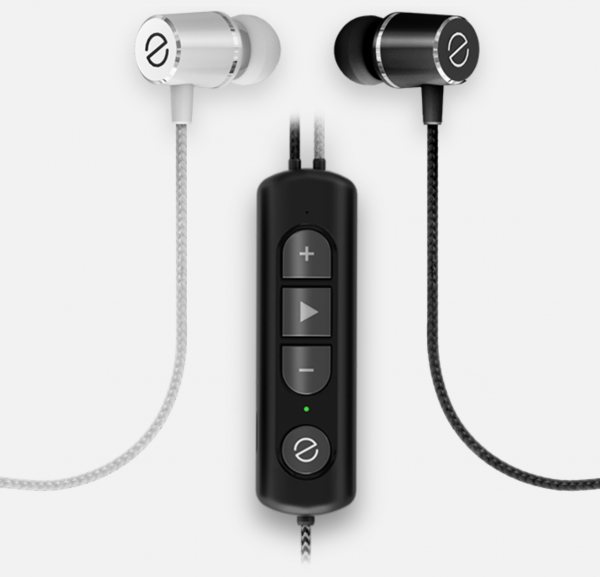Even In-Ear 'Phones Adapt to Your Hearing

Sarah, like Siri and Alexa before her, is a cheerful disembodied voice that talks you through the Even setup process. After powering on, Sarah plays a series of short bits of music in each ear. Like a hearing test in elementary school, she asks you to press the “e” button as soon as you hear each selection. Even’s designers tell me that they’re testing for 8 frequencies: 200, 500, 1k, 2k, 4k, 8k, and 14kHz. The measurements and EQ are done in each ear individually, as hearing loss isn’t always symmetrical. The results form what Even refer to as your “Ear Print.”
The Ear Print is like the prescription on those previously mentioned glasses: it adapts the playback of the music in each ear, and custom tailors the sound for your specific profile. Even’s instructions recommend re-testing every 6 months to ensure that your most current hearing needs are being met. If you’re curious what the experience is like, there’s a simulation you can try on Even’s website using your own headphones.
Your Ear Print is stored in the Even, and activates automatically when powered on. The Even require a charge to function, and have a claimed 9 hour active use-time. A micro-USB to USB adaptor will have you at full battery life in 52 minutes.
The drivers on the Even are 10mm dynamic, and the designer told me that they specifically picked the drivers not only for sound quality, but for their lack of distortion at higher volumes. A three button remote and mic works with both iOS and Android devices. Hoping to target the entry-level audio fan, Even are priced at a surprising $99.
Without taking the Ear Print into account, the Even are decent-sounding sub-$100 headphones. Solid lows with a moderate Q are balanced out by articulate highs. While the soundstage on the Even isn’t huge, for the price point, they’re pretty great. When in the “passive mode,” the lows sound a little bloated, and the mids recessed. I should note that while the “passive mode,” bypasses the Ear Print, it still requires power from the battery. Once you’re out of juice, you’re out of music.
Here’s where things get tricky. I took the Ear Print test several times. The first time, I made every effort to follow the procedeure faithfully. After the full 16 clicks, I didn’t notice a significant change in the EQ. I did find there was a slight bump in volume; but whatever adjustments were made based on my results were not significant enough for me to say that I heard a massive improvement in any one frequency range. Maybe my modifications were minor?
So I tried again, this time really throwing the results. I chose to delay my response time to the 250 and 500 Hz tones, in the hopes of boosting the lower mids and lows. My results were...inconclusive. I found that delaying the first tone’s response caused all the following tones to immediately start at a higher volume. In the end, the low-end boost that I attempted to force was minor at best. If what I’d expected was the equivalent of hitting an old boom box’s bass-boost button, I was disappointed. The increase was a gentle bump, when I expected a massive peak.
Nobody at Even is attempting to compensate for significant hearing loss, so perhaps a shading of the sonic profile is their intention. The Even site claims that their headphones are “healthier” because you don’t need to listen at higher volumes to perceive everything in recordings. Based on what I heard, I’m not sure how factual that claim is, but I also have never been one to really blast my music anyway.
In the end, the Even sound great just as a stand-alone $99 headphone, and the Ear Print feature is fun to tinker with. Having to charge them is a bit of a nuisance, and the remote/mic/Ear Print module is a bit unweildy if you don’t clip it down. But for those who have minor hearing issues in one or both ears, or who appreciate the novelty of custom tuning, the Even aren’t the worst way to spend a hundred bucks.
Even are available through their website at www.geteven.co.
- Log in or register to post comments


































































